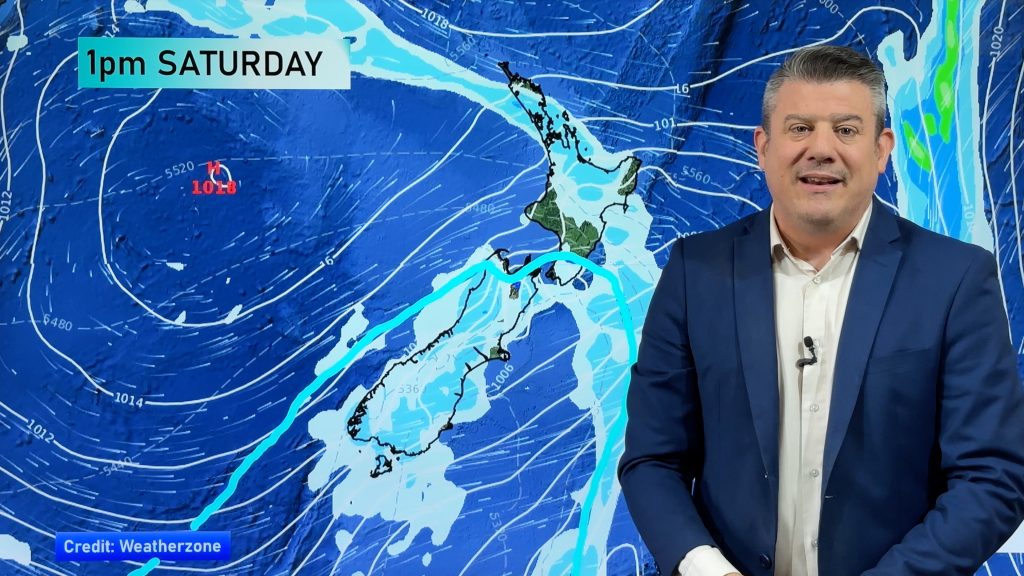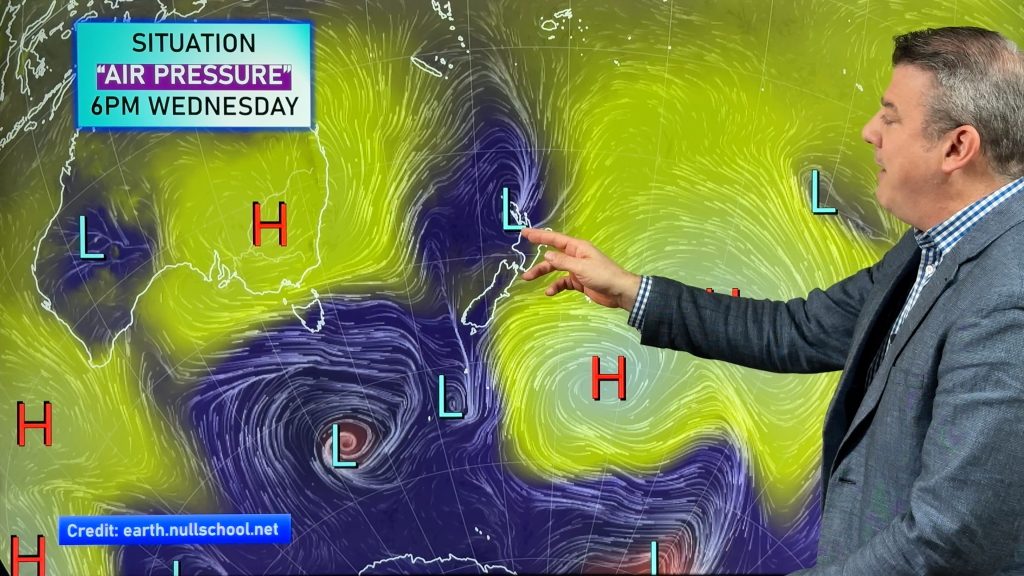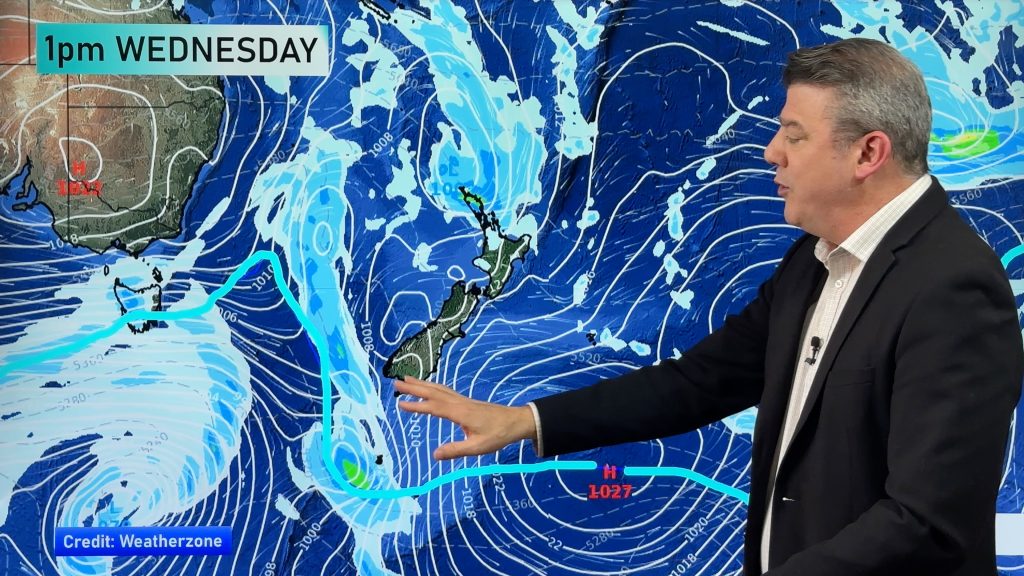Friends of WW: Weather.com’s Bruce Rose – Principal Scientist & VP
2/08/2015 4:28am

> From the WeatherWatch archives
For a decade WeatherWatch.co.nz has worked closely with Weather.com (also known as The Weather Channel on US TV). Soon we will have some exciting big news about bringing detailed forecasts into every small town and community in New Zealand thanks to Weather.com and their 200 meteorologists. It’s a major deal for WeatherWatch – and for all New Zealanders for that matter, especially those in some of our most remote and rural places.
We’ll have more about that in spring, as there is a lot to organise – but it will finally address that question we get all the time “How come you don’t forecast for my place?”.
We immediately liked using Weather.com’s data, way back in 2005. We believe their data has helped given WeatherWatch the edge in a number of significant rain events over the years, as they have built incredible global forecast systems that challenge even our own locally made government data. We trusted their data during the recent droughts, as they provided far less ‘false hope’ than some other data providers.
In the US alone the Weather.com website and TV channel have a stunning 158 million unique users. 85% of major US airlines use their data to create 50,000 flights every day.
Weather.com provides the forecasts to your Apple iPhone – or that Google weather search. And soon they’ll be adding content to WeatherWatch.co.nz alongside our forecasts. This is the power of the private weather sector.
So who is Bruce Rose? Well, he was instrumental in creating the products that Weather.com use on their website – data that we have used here at WeatherWatch.co.nz many times over the past decade.
We first met Bruce in Atlanta, Georgia in 2009 and have stayed in regular touch ever since. Bruce, and many at Weather.com, have been hugely supportive of WeatherWatch over the years – and we can’t thank them enough.
Bruce in particular has an interest and understanding of New Zealand – the political and data challenges all private forecasters in New Zealand currently have, and he is hugely supportive of our brand – which makes the weather easier to understand for most everyday New Zealanders.
Thanks for taking part in this Bruce – your replies to our 10 questions make for a great read!
Next Week: Some bloke from The Farming Show (Jamie MacKay)

BRUCE ROSE – Former Principal Scientist and VP
1) Where did you live now – and what is the climate like there year round?
I live about 60 km east of Cleveland, Ohio up near Lake Erie. We’ve seen 32-34C last August and -30C in February. We had about 240 cm of snow this past winter, since we live in the so-called “snow-belt†of northeast Ohio – of course, this was my hidden agenda moving to Cleveland from balmy Atlanta where it rarely snows.
2) You’re semi-retired these days but what was your title and role at The Weather Channel when you were running things fulltime?
I was Principal Scientist and VP in charge of creating and deriving new and scientifically sound meteorological data and products for The Weather Company. I continue to do science work for TWC. Right now we are building a 4 km grid of current conditions for the entire globe that will update every 10 minutes and serve all of our digital platforms and partners. I think this will be done early next year and is called “Currents on Demandâ€.
3) The Weather Channel (also known as Weather.com) supports small forecasters like WeatherWatch.co.nz – but did you also have issues in your early years working with your government owned National Weather Service?
Our government’s weather service shares all of their data with customers and partners for free. This policy determined long ago is pretty unusual when compared to other nations, and it has led to a thriving private weather enterprise in the US; it is really a win-win for consumers in the US and internationally.
4) What’s the most dramatic weather event you’ve been in?
Got to be the Great Lakes blizzard of January 26, 1978. All time record low pressure (954 Mb) and high wind speeds (exceeding 50 m/s) on Lake Erie and a tremendous blizzard for much of the Midwestern part of the US.
5) Your company has fundamentally changed the way people all around the world see the weather – in fact your data has helped New Zealanders in some of our tiniest communities – how does that make you feel?
I feel gratified and really good about that. I am like many others in the weather discipline that have a keen sense that we are doing something quite valuable and that we are helping so many people every day.
6) Do you think America has the most exciting weather in the world?
I am biased, but yes. Tornadoes, hurricanes, blizzards, cold waves, mesoscale convective systems, derechos, floods, ice storms. The US geography is somewhat unique in that we have a significant eastern and western mid-latitude coastline, two broad mountain chains and easy access to sources of tropical and polar air masses. This makes for interesting weather nearly all the time.
7) Have you ever been to New Zealand?
I have not. My department chair in college was a Kiwi as is the current President of TWC – Cameron Clayton. I think the country is very beautiful and diverse. We have always wanted to come and visit Australia, New Zealand, and perhaps Tasmania. A fun fact: NZ lamb chops and roasts are very popular here and are also quite reasonable in price – as well as delicious on the barby. I have somewhat of a bad addiction to grilled medium rare New Zealand lamb chops and must have them often or I just don’t feel right.
8) What value do you think small privately owned forecasters like WeatherWatch.co.nz give to New Zealanders?
Government run weather services are good at providing weather infrastructure, weather models, satellites, and monitoring capabilities. The private weather companies are often very good at analyzing, distilling, communicating and disseminating – and in general – adding value to that raw weather data. This is the model that works very well in the US and I imagine it is a model or paradigm that would translate well to any open community or society. This is where weatherwatch.co.nz comes in. The strength of these private weather businesses is understanding users and consumers and quickly, accurately and clearly connecting them to weather information. The survival and success of the business depends on this skill set; that’s not always the case with a government department.
9) What’s the latest on this historic drought in California?
A strong El Nino circulation has taken hold in the Pacific and this is expected to persist into the spring of 2016 (A-M-J). This could spell rain relief coming to CA and the west coast in our northern hemisphere winter months of D-J-F-M. Our fingers are crossed. There are lot’s of water conservation measures in force now in this region of the US. We also need to get through the upcoming part of summer with high wildfire danger – and that could be particularly tough this year.
10) Al Roker would probably be the most well known forecaster in the United States, if not one of the most well known in the world. Is he a meteorologist?
Al Roker, Jim Cantore, and Sam Champion are all very popular forecasters/meteorologists at The Weather Channel. I think Al and Sam would concede that Jim is – scientifically – the strongest MET of this triumvirate. But Al and Sam are no slouches either. They’ve all been doing this weather gig for a long time and they really know their stuff. So Al and Sam may not be “degreed†meteorologists but from the standpoint of experience – and their incredible ability to communicate and relate to viewers – they are valuable members of the MET fraternity.
– WeatherWatch.co.nz Exclusive
Comments
Before you add a new comment, take note this story was published on 2 Aug 2015.





Add new comment